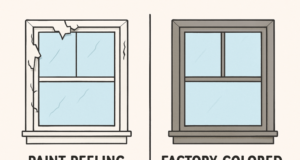Moving into a new home is an exciting milestone—but it can quickly turn stressful if pests show up uninvited. Whether it’s ants in the kitchen, spiders in the basement, or mice in the walls, pest problems can make your dream home feel less than perfect. Luckily, with a little planning and maintenance, you can keep your new home pest-free from day one.
Below is a guide to help homeowners protect their property from common household pests right after moving in.
1. Start with a Thorough Inspection
Before unpacking, take a walk around your property. Look for any signs of existing infestations like:
- Droppings or chew marks (common with rodents)
- Dead insects in windowsills or corners
- Mud tubes near your foundation (a sign of termites)
- Nests in eaves, attic corners, or shrubs
If you find anything suspicious, call a licensed pest control professional for an inspection. It’s better to catch problems early before they grow out of control.
2. Seal All Cracks and Gaps
Pests don’t need much space to get inside—mice can squeeze through openings the size of a dime. Use caulk, weatherstripping, or steel wool to seal up:
- Gaps around doors and windows
- Cracks in the foundation or siding
- Openings around pipes and utility lines
- Vents without screens
Check your garage door, too—it’s a common weak point.
3. Clean Before You Unpack
Before placing furniture or boxes, sweep, vacuum, and disinfect the entire house. Pay close attention to:
- Kitchen cabinets
- Pantries and under sinks
- Closets and basement corners
Eliminating crumbs, food residue, and cobwebs helps reduce attractants for pests.
4. Store Food Properly
Once you’re moved in, don’t leave food exposed. Use airtight containers for dry goods like cereal, rice, and pet food. This discourages ants, cockroaches, and rodents. Clean counters and floors regularly, especially in the kitchen and dining areas.
5. Keep Outdoor Areas Maintained
The exterior of your home plays a major role in pest prevention. Here’s what to do:
- Trim back shrubs, trees, and vines touching the house
- Clear debris, wood piles, or leaf litter from near the foundation
- Fix leaky spigots and unclog gutters to avoid standing water
- Mow the lawn regularly
Keeping the perimeter dry, clean, and tidy discourages insects and rodents from nesting.
6. Install Door Sweeps and Window Screens
An open door or window is an open invitation to pests. Install door sweeps on exterior doors and ensure all windows have screens that are free of holes. Also check that screen vents in attics and crawlspaces are intact.
7. Schedule Preventive Pest Control
Many pest control companies offer preventative treatments that create an invisible barrier around your home. Consider scheduling quarterly services to stay ahead of:
- Carpenter ants
- Termites
- Spiders
- Wasps
- Rodents
A small investment now can prevent major infestations later. Click here for Vaughan pest control services
8. Be Mindful of Moisture
Damp basements, leaky faucets, or clogged drains can attract all kinds of pests. Keep an eye out for:
- Musty smells or wet spots in basements or crawlspaces
- Dripping pipes under sinks or behind toilets
- Standing water in trays under plants or appliances
Use dehumidifiers where necessary and fix plumbing issues promptly.
9. Inspect Deliveries and Boxes
Pests can hitchhike into your home inside cardboard boxes, furniture, or appliances. Before bringing in anything from storage, secondhand shops, or deliveries, give it a once-over. Look for eggs, droppings, or live bugs—especially in upholstered items or cardboard.
10. Educate Your Family and Guests
Everyone in your household plays a part in keeping pests away. Teach kids not to leave food out, keep trash contained, and clean up after pets. Ask guests to remove shoes at the door to avoid tracking in outdoor insects or soil that may contain pest eggs.
Final Thoughts
Buying a new house is a big step—and keeping it pest-free is essential to protecting your investment. By following these steps and staying vigilant, you’ll create a safe, clean, and comfortable space for you and your family. If pests ever become a problem, don’t hesitate to call a licensed professional. The sooner you act, the easier (and cheaper) it is to fix.















